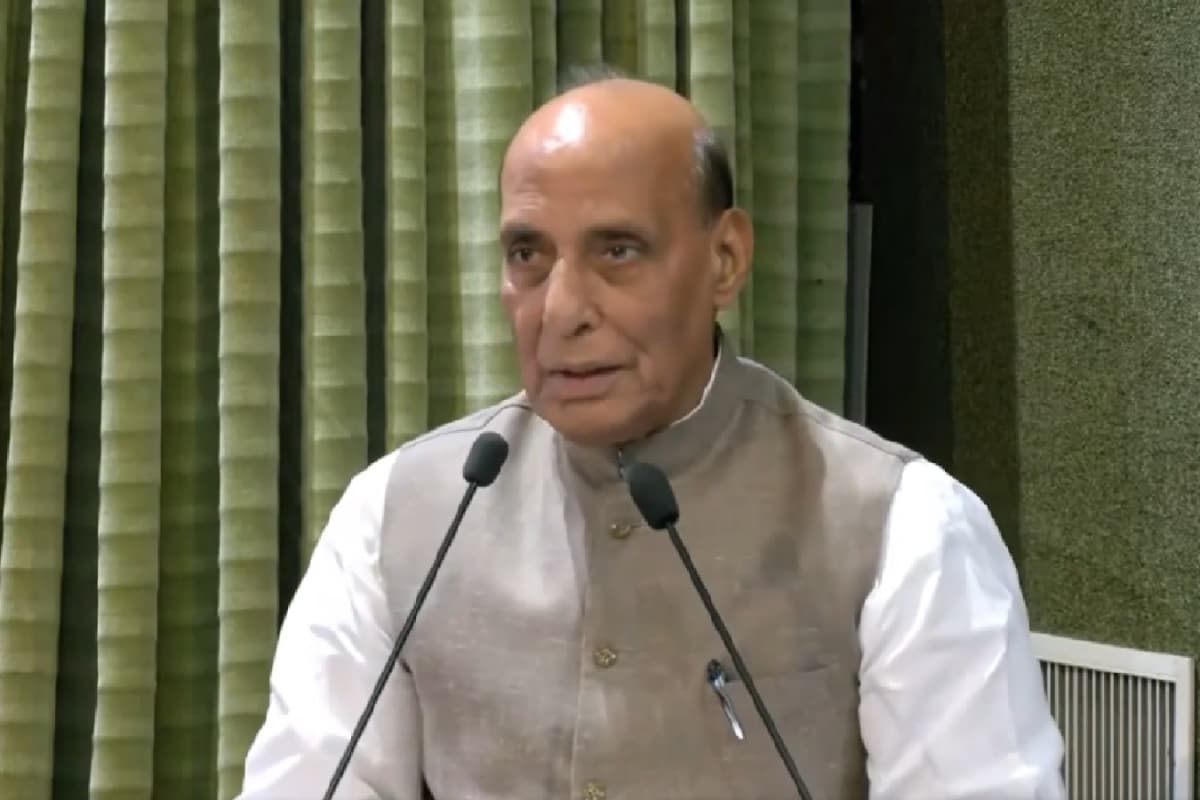

Following the successful execution of Operation Sindoor, Defence Minister Rajnath Singh visited Srinagar, Jammu and Kashmir, where he addressed soldiers and lauded their efforts. Operation Sindoor was launched as a calibrated military response to escalating asymmetric warfare and cross-border terror attacks. It was triggered after coordinated drone and missile strikes on multiple Indian cities, including Srinagar and Jammu, on the night of May 7–8.
During his visit, Rajnath Singh said that Pakistan would never forget the events of Operation Sindoor. He commended the people of Jammu and Kashmir for expressing their anger against Pakistan and terrorists after the Pahalgam attack. He stated that the manner in which Pakistani posts and bunkers were destroyed across the border is something that the "enemy will never be able to forget". He further added, "I am here to feel that energy which destroyed the enemies".
Operation Sindoor involved precision strikes on terror camps in Pakistan and Pakistan-occupied Kashmir (PoK). Indian forces conducted 24 precision strikes on nine different targets in a span of 25 minutes. The operation targeted infrastructure linked to terrorist groups such as Lashkar-e-Taiba (LeT), Jaish-e-Mohammed (JeM), and Hizbul Mujahideen. The strikes were a response to the April 22 Pahalgam terror attack, which resulted in the deaths of 26 people.
The Indian Air Force (IAF) played a crucial role in Operation Sindoor, successfully bypassing and jamming Pakistan's Chinese-supplied air defence systems. The mission was completed in just 23 minutes, with all Indian assets returning safely. The IAF's Integrated Air Command and Control System (IACCS) coordinated the strikes, while loitering munitions and drone warfare were deployed to dismantle Pakistan's air defence network. Battle-proven air defence systems like the Pechora, OSA-AK, and LLAD guns, as well as indigenous systems such as the Akash, demonstrated exceptional performance.
The operation utilized advanced supertech non-contact war equipment, including Rafale aircraft, SCALP missiles, HAMMER missiles, Kamikaze loitering drones developed with Israeli aid, and BrahMos missiles. These systems enabled deep strikes and precision targeting without the need for ground forces or traditional airstrikes.
Following Operation Sindoor, Pakistan launched retaliatory attacks, resulting in the deaths of 16 Indian civilians and damage to religious structures. India responded with precision strikes on six Pakistani air bases, targeting only military infrastructure to minimize collateral damage. The Director General of Military Operations (DGMO), Lieutenant General Rajiv Ghai, revealed that India had attempted to communicate the rationale behind the strikes to Pakistan, but the request was turned down.
The success of Operation Sindoor has been attributed to India's growing self-reliance in defence technology, particularly in electronic warfare and drone combat. The operation marked a decisive milestone in India's march toward military self-reliance. According to Defence Minister Rajnath Singh, the operation neutralised the leadership and infrastructure of terrorist groups.
The international community reacted to Operation Sindoor with mixed responses. Some countries, like the United States, urged restraint, while others, such as Israel, supported India's right to self-defence. China condemned the strikes and called for calm.
In the wake of Operation Sindoor and the subsequent ceasefire agreement, schools in certain border areas of Jammu and Kashmir have reopened. The helicopter services from Katra to Shri Mata Vaishno Devi shrine have also resumed.
Rajnath Singh's visit to Srinagar underscores India's commitment to maintaining security and stability in the region. His statement that "Pakistan will never forget" Operation Sindoor serves as a strong message to deter future acts of terrorism and aggression.